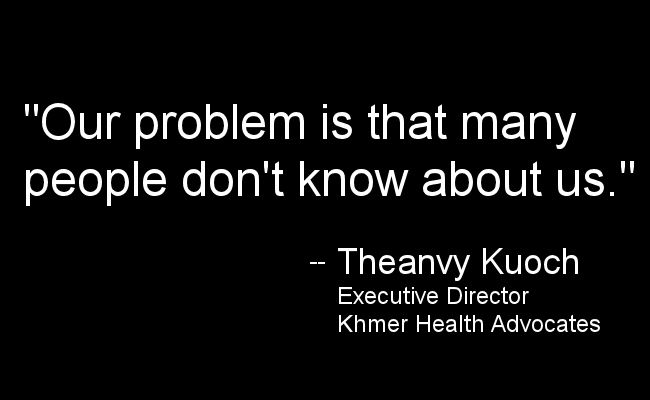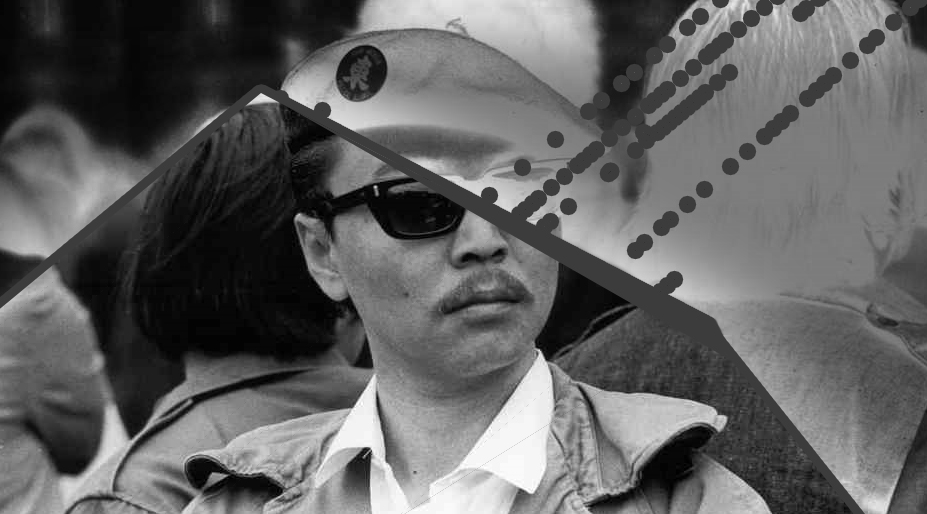One of the watershed moments in my development as an AANHPI race advocate happened at ECAASU in 2003. I was still a student activist, and president of my on-campus Asian American political group. That ECAASU was my first Asian American student conference, and my first real opportunity to interact with politically conscious Asian Americans outside of the gates of my Ivory Tower.
The only workshop I remember is the poorly attended workshop on AANHPI healthcare disparities I attended because mental health disparities were a growing issue on my campus. I emerged undeniably woken up.
An enduring problem for AANHPI racial discourse is the homogenizing effect that results from how the mainstream talks about us, and also from how some of us talk about ourselves. We paint the AANHPI identity with the broad brush of “sameness”, and in so doing we commit two unforgivable sins: 1) we universalize the narratives of East (and to a far lesser degree, South) Asian Americans as if they are wholly representative of the AANHPI identity; and 2) we shortchange the Southeast Asian American, Native Hawaiian and Pacific Islander members of our vibrant and diverse AANHPI community.
As evidence of this mainstream instinct towards AANHPI homogenization, we need look no further than Nicholas Kristof’s recent column in the New York Times, which patronizingly lauded Asian Americans as universally high-achieving. We also need look no further than the angst expressed by Governor Jerry Brown when he vetoed a widely popular California state bill that would have required sophisticated ethnic disaggregation of demographic data for AANHPI people. To date, most AANHPI racial data is aggregated during collection and analysis.
Brown’s veto effectively condones the erasure of Southeast Asian Americans, Native Hawaiians and Pacific Islanders and the socioeconomic disparities they face. In at least one area — healthcare access — the cost of this erasure can be measured in human lives.
As I first appreciated in that ECAASU workshop over a decade ago, healthcare disparities are particularly dire for Southeast Asian Americans, Native Hawaiians and Pacific Islanders. Whether we’re talking about mental health or cancer, incidence rates are particularly high among Southeast Asian Americans, Native Hawaiians and Pacific Islanders even in comparison to the total AANHPI community, while prognosis is often far poorer.
The United States’ current healthcare system ignores such racial- and ethnicity-specific disparities. Instead, we apply a “one-size-fits-all” approach to healthcare. We assume that general efforts to improve healthcare access will improve usage of services for all groups. This approach ignores what many intersectional social justice activists have come to appreciate: that an obstinately post-racial approach cannot solve the problems of a structurally racist society. In the case of the AANHPI community, we also cannot apply a “one-size-fits-all” approach, under the assumption that solutions that help some AANHPI will equally benefit all AANHPI.
We need solutions that offer nuanced corrections that acknowledge how and why AANHPI — and specifically Southeast Asian Americans, Native Hawaiians and Pacific Islanders — still lack meaningful healthcare access.
In Connecticut, a recent townhall for the state’s large Southeast Asian American population exposed the structural reasons as to why some Southeast Asian Americans still lack adequate healthcare. Several issues highlight the need for a more racially- and ethnically-specific approach to this nation’s healthcare. Rates of post-traumatic stress disorder, for example, are particularly high for Southeast Asian American refugees, while rates for the rest of the AANHPI community are not particularly noteworthy. Yet, our current mental healthcare system fails to broadly acknowledge this high incidence among Southeast Asian Americans, and offers no particular focus on how the Southeast Asian American refugee experience nuances post-traumatic stress disorder or its treatment. Reports the Connecticut Mirror:
Community leaders spoke of their own experiences surviving prison camps or torture in Vietnam, Laos and Cambodia.
Howard Phengsomphone, executive director of the Lao Association of Connecticut, described fleeing Laos by swimming across the Mekong River in the middle of the night. He spent almost a year in a refugee camp before being resettled in Old Lyme in 1980.
Theanvy Kuoch, executive director of Khmer Health Advocates and a member of the consumer advisory board that hosted the event, spoke of living through the Khmer Rouge’s brutal regime in Cambodia in the 1970s. At least 19 of her family members were killed by the Khmer Rouge or died from starvation or lack of medication.
“I remember the Khmer Rouge put my sister in a cage” and beat her daily, she said.
Like Kuoch, many Cambodian refugees came to the U.S. with little more than the clothes on their backs, and settled in places where no one spoke their language, where the food was unfamiliar, she said.
Even today, Kuoch said, “Our problem is that many people don’t know about us.”
Quality healthcare requires the establishment of trust between patient and caregiver. That trust is impossible when our healthcare fails to openly tackle how race, ethnicity and culture impacts patients’ relationships with their health status, and when caregivers do not prioritize culturally-sensitive interactions. Reports the Connecticut Mirror:
One of the biggest challenge health care providers face in working with refugees, she added, is establishing the trust needed to talk about intimate health details.
Dr. Rick Miller, the medical director for the Khmer Health Advocates Torture Treatment Program, noted that refugees have experienced many difficult cultures. Those from Cambodia, he noted, lived through Cambodia before the Khmer Rouge, the horrors of Pol Pot’s regime, refugee camps, and starting out in a new country as immigrants. And that can lead to cultural clashes, he said. Although rice is a staple in Cambodian diets, he said, one survivor was told by his primary care doctor not to eat rice for health reasons.
The man later told others, “I didn’t live through Pol Pot to be told now that I cannot eat rice,” Miller said.
Only 5.7% of America’s doctors have been reported to be AANHPI.
Other problems faced by Southeast Asian American patients might apply more broadly to many others within the AANHPI community. One issue, for example, that emerged was language barriers. Townhall attendees focused attention on the difficulties of trying to interact with healthcare providers without trained interpreters. Reports the Connecticut Mirror:
Many of those who came to Connecticut as refugees from Vietnam, Cambodia and Laos in the 1970s and 80s live with multiple chronic medical conditions, depression and post-traumatic stress. But often, they get medical care without access to trained interpreters to help bridge language barriers that can make it difficult to communicate their symptoms, understand how to handle medication, or build the trust needed to address the effects of trauma, speakers said.
“Language is a huge barrier,” said Megan Berthold, a UConn School of Social Work professor who has worked extensively with refugees from Southeast Asia.
A patient might nod and smile or answer yes or no in response to questions, leading the health care provider to think he understands, Berthold said. Some patients bring their children to translate for them, which can make it difficult for a parent talk about feelings of depression and hopelessness, she said. And without trained interpreters, she said, many patients don’t feel safe telling their doctor the full extent of what they’re experiencing, asking questions or weighing in on their treatment in ways that could improve it.
Most first- and second-generation AANHPI can relate to the problem described here, whether because we experience the effects of a language barrier firsthand or because we are relegated to the role of impromptu translator for our limited English-proficiency parents at ages as young as seven or eight. Recently, I was having a conversation with my mom when the topic of finding an in-language healthcare provider also came up. Even though my mother speaks passable English, she is not sufficiently proficient in English to feel comfortable having complicated conversations about her health status with an English-speaking doctor; for her as for many limited English proficient patients, access to an in-language doctor is a medical necessity.
The 1964 Civil Rights Act laid the legal groundwork that guarantees all patients in-language healthcare services by requiring access to a trained interpreter. But, in practice, few patients are aware that they have this right, and few hospitals have created the infrastructure to ensure in-language or translation services, leaving it to individual racial and ethnic communities to create their own ad hoc hotline services.
The Affordable Care Act has been good, but it is not enough. Structural barriers persist that deny meaningful healthcare access for many people, and those barriers stand along racial and ethnic lines. This country continues to focus our national healthcare discourse only on creating better access — through creating universal healthcare coverage — to our existing healthcare system. Even within the AANHPI community, we don’t spend enough time addressing disparities that disproportionately impact some members of our communities over other, and in so doing we create additional marginalization within our already marginalized community.
We, as a country and even as AANHPIs, have not done enough to demand the necessary, if radical, changes to the kinds of services our healthcare providers offer. We have yet to really address how race and ethnicity nuances the healthcare needs of our most marginalized patients. We have yet to talk broadly about more culturally-sensitive training for our healthcare providers; or ensuring in-language healthcare services; or improving representation of underrepresented people among the ranks of our medical caregivers. We focus our efforts on the fight for better health insurance, but fail to ask if the racially homogeneous and culturally unspecific services opened up to us by this increased coverage are really adequate to meet the needs of all patients within our community.
Patients are not all the same, so why does our healthcare system treat us as if our healthcare services should be?


